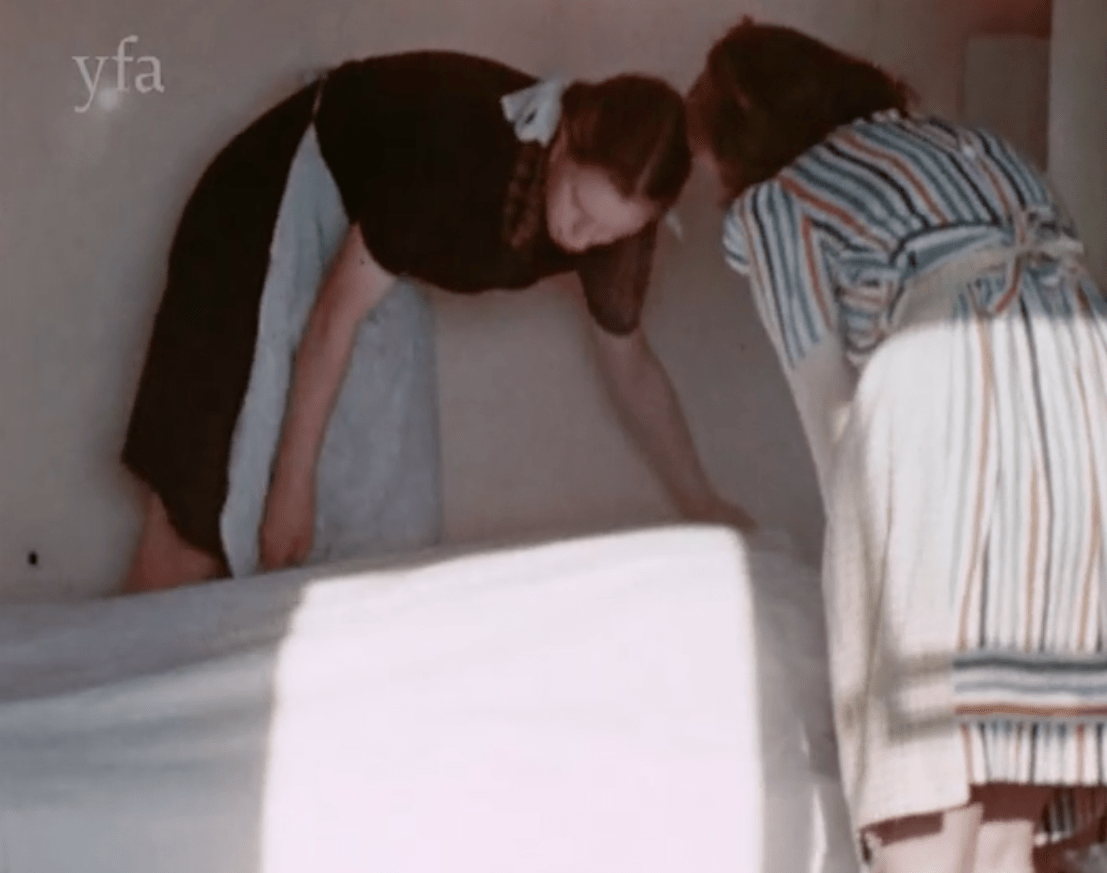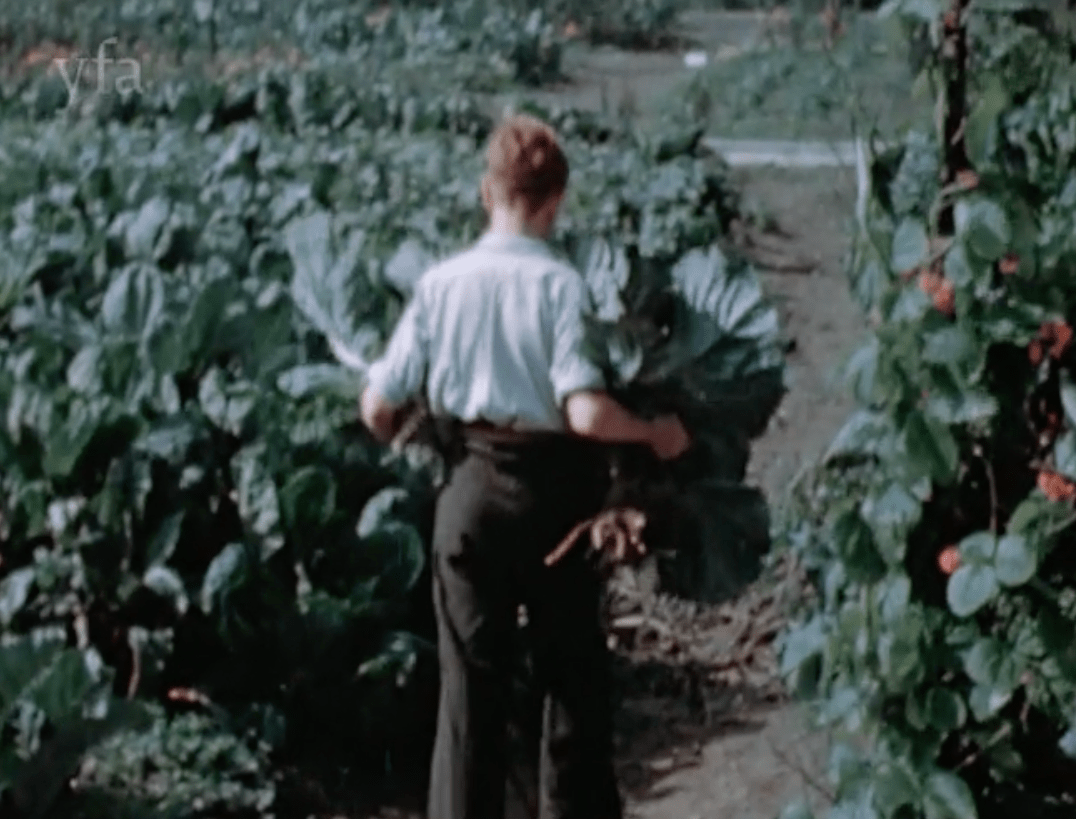Joseph Rowntree Senior School, 1947
This silent, colour-film was made by Mr Lightowler, the Headmaster of Joseph Rowntree Senior School, near York, just after the Second World War. It depicts ‘the good life’ in a rural secondary modern school, showing how curricular freedoms allowed pupils to undertake practical work related to their environment. Girls and boys are shown doing different sorts of work; the girls making beds and cleaning in the school flat, the boys using a letterpress printer and working in the school garden.



Source: Yorkshire Film Archive
An extract from the film and a full description of the scenes are available to view online here, via the Yorkshire Film Archive.
Near Home, 1949
‘Near Home’ was the work of acclaimed female British filmmaker Kay Mander. It was a public information film produced for the Ministry of Information following the 1944 Butler Act, which introduced free universal secondary education in England and Wales for the first time. The film depicts secondary-age children undertaking a topographical local studies project in Bishop Auckland, County Durham. It opens with the teacher, sitting on a hillside, having an informal discussion with his pupils about what they know about their own town. The teacher encourages the pupils to find out more about it for themselves through a series of grouped, projects. This approach, developed between the wars in primary education, was recommended for the new secondary modern schools after 1945. We later see the pupils explaining what they have discovered through a combination of experiential learning (e.g. talking to a local farmer, pictured below) and academic study.


Source: BFI
The full length film is available to view online here, via the BFI.